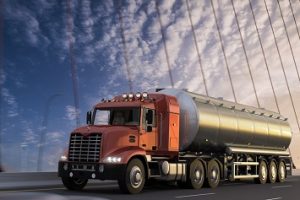Hazardous materials regulations under the Pipeline and Hazardous Materials Administration (PHMSA) provide the segregation or separation of certain hazardous materials when being shipped by the various modes of transportation. Today we will review what your employees need to know about segregation when loading vehicles for transportation on public highways.

Certain hazardous materials must be separated so that in the event of leaks from packages, commingling would not occur. The segregation and separation chart of hazardous materials for highway transportation applies to hazardous materials in one or more hazard classes in:
- Packages that require labels,
- Compartments within a multicompartmented cargo tank, or
- Portable tanks loaded in a transport vehicle or freight container.
The “Segregation Table for Hazardous Materials” found in 49 CFR 177.848 shows the segregation requirements for hazard classes and divisions. A hazard class or division that is not shown is not restricted. For example, hazard Class 9 is not restricted. In addition, a blank space in the table also indicates that no restrictions apply.
In addition to the Segregation Table, 49 CFR 177.848 also contains a “Compatibility Table for Class 1 (Explosive) Materials.”
Note. In order to use the segregation table, your employees must know the hazard classes of the materials that will be loaded on the vehicle.
Know your ‘Xs’ and ‘Os’
The Segregation Table contains a series of Xs and Os some As and some asterisks. What do these mean?
- An “X” in the box where a row and a column intersect means that you may not load, transport, or store the two materials together in the same transport vehicle or storage facility.
- An “O” means you may load, transport, and/or store the materials together, provided certain conditions are met to preclude the commingling of hazardous materials. Notwithstanding the methods of separation employed, Class 8 (corrosive) liquids may not be loaded above or adjacent to Class 4 (flammable) or Class 5 (oxidizing) materials; except that shippers may load truckload shipments of such materials together when it is known that the mixture of contents would not cause a fire or a dangerous evolution of heat or gas.
- An “A” in the second column of the table indicates that, notwithstanding the requirements of the letter “X”, you may load or store ammonium nitrate and ammonium nitrate fertilizers with Division 1.1 (Class A explosive) or Division 1.5 materials.
- The asterisks in the table indicate that the compatibility table in 49 CFR 177.848(f) governs segregation among different Class 1 (explosive) materials.
Going by Boat?
As noted, the requirements discussed in this article apply to the transportation of hazardous materials by highway. However, if you are loading a vehicle that is going to be transported by a vessel (other than a ferry), you must follow the segregation requirements for vessels found at 49 CFR 176.83.
Additional Prohibitions
In addition to the provisions of the Segregation Table, there are specific conditions for certain materials:
- Cyanides, cyanide mixtures or solutions may not be stored, loaded, and transported with acids if a mixture of the materials would generate hydrogen cyanide;
- Division 4.2 (spontaneously combustible) materials may not be stored, loaded, and transported with Class 8 (corrosives) liquids; and
- Division 6.1 (poisonous) Packing Group I, Hazard Zone A material may not be stored, loaded, and transported with Class 3 (flammable and combustible liquids) material, Class 8 liquids, and Division 4.1 (flammable solids), 4.2, 4.3 (dangerous when wet), 5.1 (oxidizers) or 5.2 (organic peroxide) materials.
There are exceptions and specific segregation requirements for shipments of waste materials found at 49 CFR 173.12(e).
Tomorrow we will review some examples for using the Segregation Table.
